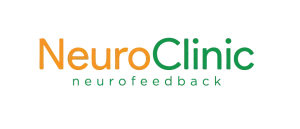- April 8, 2025
- 3:05 am
1️⃣ The 3-Minute Pause: Regulate Your Nervous System Before Saying Yes
When someone asks for your time—whether it’s a work project, school commitment, or last-minute favor—your brain might default to an automatic “yes” before you’ve had a chance to process. This is especially common for people with ADHD, who may impulsively agree, and those with anxiety and overwhelm, who may feel pressured to people-please.
🔬 The Brain Science
Your amygdala – the brain’s threat detector – can hijack decision-making under stress, leading to knee-jerk reactions. By creating a brief pause, you engage your prefrontal cortex, the part of the brain responsible for rational thinking and decision-making.
🛠 Try This
Before agreeing to anything, practice the “3-Minute Pause”–a simple technique for how to say no with ADHD. Say, “Let me check my schedule and get back to you.” Then, step away, take a few deep breaths, and assess if the commitment aligns with your energy levels and priorities. Over time, this rewires your brain to respond intentionally rather than reactively.
2️⃣ The Visual Boundary Cue: Reduce Decision Fatigue
🔬 The Brain Science
Your brain thrives on environmental cues—physical signals that tell it when to switch modes. Research shows that creating visual boundaries can help your brain shift from “work mode” to “home mode,” reducing stress and decision fatigue.
🛠 Try This
Implement a visual boundary cue to mark the end of your workday. This could be:
✔️ Physically closing your laptop and putting it out of sight
✔️ Changing into different clothes after work
✔️ Using smart lights that dim in the evening to signal wind-down time
These small, intentional shifts help train your brain to transition smoothly between roles.
3️⃣ The "Brain-Friendly" Time-Blocking Strategy
For many parents with ADHD or anxiety, structuring time effectively is one of the hardest challenges. It’s easy to get pulled into work tasks during family time—or to feel guilty about personal time when there’s still work to do. Time-blocking helps you reclaim control by assigning clear “brain-friendly” windows for different activities.
🔬 The Brain Science
Your brain has ultradian rhythms—natural cycles of energy and focus that last about 90 minutes. When you plan work and rest around these cycles, you maximize productivity and prevent burnout.
🛠 Try This
Try the 90/30 Rule for time-blocking:
- 90 minutes of deep work (uninterrupted, focused work time)
- 30-minute reset (family time, movement, or rest—no work allowed)
For example, you might block 9:00-10:30 AM for work, then 10:30-11:00 AM for a walk with your child or a mindfulness break. This prevents task-switching overload and keeps work from creeping into personal time.
⏳ Bonus Tip: Use a visual timer or app (like Pomodoro or Time Timer) to help your brain “see” time more clearly. This reduces the feeling of overwhelm and helps you stick to boundaries.
Your Brain Deserves Boundaries
Setting boundaries isn’t selfish—it’s an essential tool for ADHD parent burnout prevention and protecting your mental bandwidth. By incorporating these brain-based strategies for working parents, you can create a sustainable balance between work, parenting, and self-care.
💡 Need extra support?
Neurofeedback can help retrain your brain to manage stress, regulate focus, and reduce anxiety. Reach out to learn how it can support your journey!




